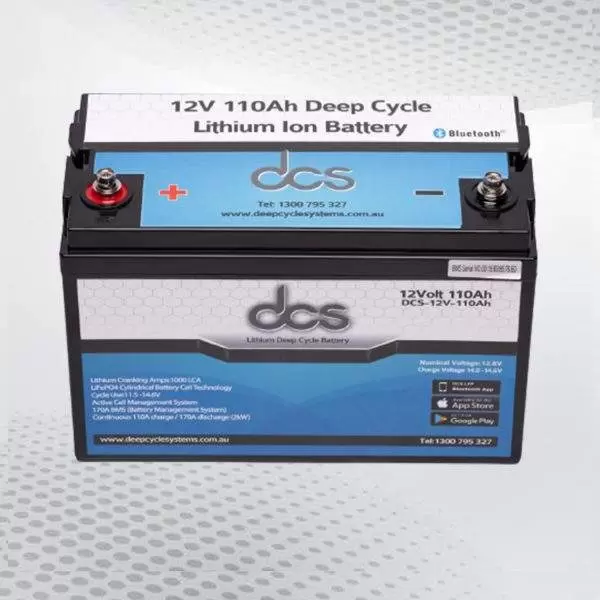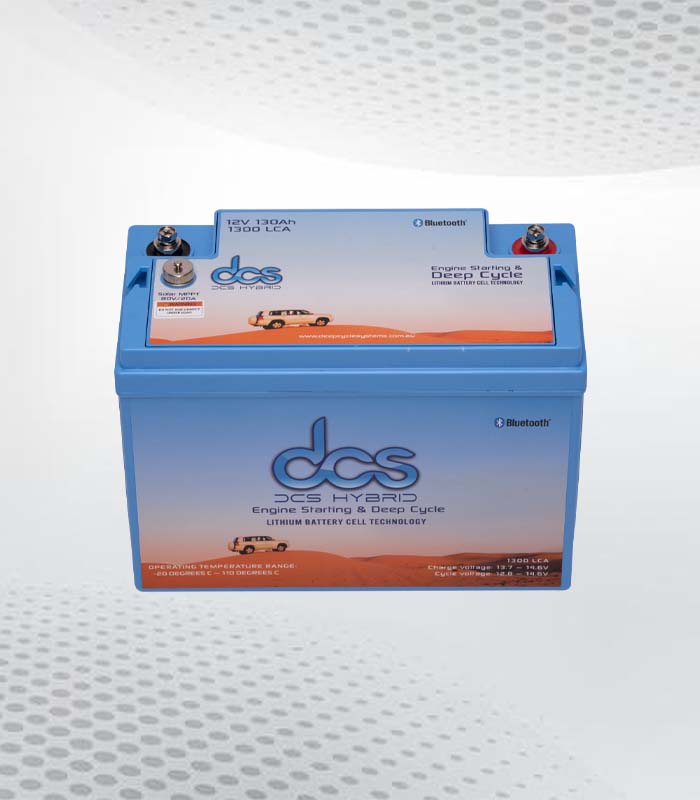Lithium-ion battery packs are essential for powering all kinds of modern gadgets. From your laptop to your phone, there’s a good chance you’re using a lithium-ion battery to keep it running. As a result, it’s important to understand the best ways to select and maintain a lithium-ion battery pack. In this blog post, we’ll provide a comprehensive guide to help you make the best decisions when it comes to choosing and maintaining your lithium ion battery pack. Read on to learn more!
How to Maintain a Lithium-Ion Battery Pack?
Proper maintenance is key to ensuring your lithium-ion battery pack’s longevity and optimal performance. Here are some essential tips to help you maintain your battery pack:
Avoid extreme temperatures:
Exposing your battery pack to high temperatures can shorten your lifespan. Please keep it away from direct sunlight and avoid leaving it in hot environments, such as inside a parked car on a hot day.
Charge and discharge correctly:
Lithium-ion batteries perform best when charged between 20-80% capacities. Avoid completely draining the battery or leaving it at full charge for extended periods.
Store properly:
If you need to store your battery pack for a long time, charge it to around 50% capacity and store it in a cool, dry place.
Clean regularly:
Keep the battery contacts clean and free from dust or debris. Use a soft, dry cloth to wipe the contacts to maintain good conductivity gently.
Use the right charger:
Always use the charger specifically designed for your lithium-ion battery pack. Using incompatible chargers can damage the battery and reduce its lifespan.
By following these simple maintenance tips, you can maximize the lifespan and performance of your lithium-ion battery pack, ensuring that it continues to power your devices efficiently for years to come.
Understanding Lithium-Ion Battery Pack
Lithium-ion battery packs are a type of rechargeable battery commonly used in portable electronic devices. Understanding how these batteries work is essential for selecting the right one for your needs and maximizing their performance. Lithium-ion cells are at the heart of a lithium-ion battery pack, which store and release electrical energy through a chemical reaction. These cells consist of a positive electrode (cathode), a negative electrode (anode), and a separator. Lithium ions move from the cathode to the anode when the battery is charged, and during discharge, they move in the opposite direction.
The capacity of a lithium-ion battery pack is determined by the number and size of the individual cells it contains. The voltage and energy density of the battery also play a role in its overall performance. It’s important to understand these technical specifications when choosing a battery pack for your device. The design and construction of the battery pack are crucial factors to consider. Factors such as thermal management, protection circuits, and overall durability can greatly affect the reliability and safety of the battery pack.
Factors to Consider While Choosing a Lithium-Ion Battery Pack
Choosing the right lithium-ion battery pack for your needs can significantly impact your electronic devices’ performance and longevity. Here are some important factors to consider when selecting a battery pack:
Capacity:
The battery pack’s capacity determines how long it can power your device. Consider your usage patterns and how often you need to recharge your device to choose a battery pack with the appropriate capacity.
Compatibility:
Make sure the battery pack is compatible with your device. Check the voltage and physical dimensions of the battery pack to ensure it fits properly and can provide the necessary power.
Quality:
When choosing a battery pack, look for reputable brands and reliable manufacturers. High-quality batteries are more likely to provide consistent performance and have built-in safety features.
Warranty:
Check if the battery pack comes with a warranty. A good warranty can give you peace of mind and protection against potential defects or issues with the battery pack.
Price:
While price shouldn’t be the only determining factor, it’s important to consider your budget. Compare prices from different sellers, but remember that choosing a cheaper option may compromise quality and performance.
Considering these factors, you can choose a lithium-ion battery pack that meets your specific requirements and ensures optimal device performance.
Common Problems with Lithium Ion Battery
Lithium-ion batteries are generally reliable and efficient power sources for our devices. However, like any technology, they can encounter some common problems. Here are a few issues you may face with your lithium-ion battery pack:
Capacity degradation:
Over time, lithium ion battery may experience a decrease in their overall capacity. This means they may hold a charge better than they used to. Factors such as usage patterns, temperature exposure, and charging habits can all contribute to capacity degradation.
Shortened lifespan:
The lifespan of a lithium-ion battery pack is typically measured in charge cycles. A charge cycle is the process of charging a battery from 0-100%. As the battery goes through more charge cycles, its overall lifespan may decrease, leading to the need for more frequent replacements.
Thermal runaway:
Although rare, thermal runaway is a serious issue that can occur with lithium-ion batteries. This is when the battery heats up uncontrollably, leading to potential fires or explosions. Thermal runaway can be caused by overcharging, physical damage, or manufacturing defects.
Swelling:
Another common problem with lithium-ion batteries is swelling. Swelling occurs when the battery expands, usually due to a buildup of gas inside. Swelling can be caused by overcharging, excessive heat, or battery aging.
Tips for Extending the Life of Your Lithium-Ion Battery Pack
Taking proper care of your lithium-ion battery pack can help extend its lifespan and ensure it continues to power your devices efficiently. Here are some tips to help you get the most out of your battery pack:
Avoid overcharging:
Overcharging can stress your battery unnecessarily and shorten its lifespan. Unplug your device when it reaches 100% charge, and avoid leaving it plugged in overnight.
Don’t let your battery drain completely:
Lithium-ion batteries prefer to be charged in shorter bursts rather than completely draining them. Keep your battery level between 20% and 80% to maximize longevity.
Keep your battery cool:
Excessive heat can damage your battery and lead to capacity degradation. Avoid exposing your device to high temperatures; never leave it in a hot car or direct sunlight for prolonged periods.
Use power-saving settings:
Adjusting your device’s power-saving settings can help conserve battery life. Lowering screen brightness, turning off unnecessary background apps, and reducing notifications can all help extend your battery’s runtime?
Avoid extreme temperatures:
Extreme cold temperatures can also affect the performance of your lithium-ion battery pack. Keep your device warm or insulated to prevent potential damage if you’re in a cold environment.
Maximizing Performance and Safety of Lithium-Ion Battery Packs
When maximizing the performance and safety of your lithium-ion battery pack, there are a few key things to keep in mind.
- Always use a charger that is specifically designed for your battery pack. Using incompatible chargers can not only damage the battery but can also pose a safety risk?
- It’s important to avoid exposing your battery pack to extreme temperatures. High temperatures can shorten the lifespan of your battery, while extreme cold can also affect its performance. It’s best to keep your battery in a cool, dry place and avoid leaving it in direct sunlight or a hot car.
- Another important factor in maximizing performance is correctly charging and discharging your battery pack. Lithium-ion batteries perform best when charged between 20-80% capacities. Avoid completely draining the battery or leaving it at full charge for extended periods.
- Be mindful of the capacity and compatibility of your battery pack. Choosing a battery pack with the appropriate capacity for your device and ensuring compatibility can maximize its performance and longevity.
Charging and Discharging Lithium-Ion Battery Packs Properly
Properly charging and discharging your lithium-ion battery packs is essential for longevity and optimal performance. Follow these tips to ensure you’re handling your battery packs correctly:
Charging:
When charging your battery pack, avoid leaving it plugged in overnight or overcharging it. Once it reaches 100% capacity, unplug it promptly. Overcharging can put unnecessary stress on the battery and shorten its lifespan.
Discharging:
It’s important to avoid completely draining your lithium-ion battery pack or leaving it at full charge for extended periods. Aim to keep the battery level between 20% and 80% capacity to maximize its lifespan.
Charging frequency:
Lithium-ion batteries prefer to be charged in shorter bursts rather than being continuously charged or drained. Consider charging your battery pack more frequently throughout the day to prolong its lifespan.
Charging temperature:
Charging your battery pack at room temperature is best. Avoid charging it in extremely hot or cold environments, affecting its performance and lifespan.
FAQs
Can I always keep my lithium ion battery pack plugged in?
It’s best to unplug your battery pack once it reaches 100% capacity. Overcharging can put unnecessary stress on the battery and shorten its lifespan.
Can I charge my battery pack overnight?
It’s not recommended to charge your battery pack overnight. Once it’s fully charged, unplug it promptly to avoid overcharging.
Can I use any charger with my battery pack?
No, always use the charger specifically designed for your battery pack. Using incompatible chargers can damage the battery and reduce its lifespan.
How long do lithium-ion battery packs typically last?
The lifespan of a lithium-ion battery pack is usually measured in charge cycles. With proper maintenance, they can last several years.
How can I dispose of my old lithium-ion battery pack?
To properly dispose of your old battery pack, check with your local recycling center or electronics retailer for battery recycling programs.
Conclusions
Choosing and maintaining a lithium-ion battery pack is essential for ensuring your devices’ longevity and optimal performance. By following the tips and guidelines in this comprehensive guide, you can make informed decisions when selecting a battery pack and take proper care of it to maximize its lifespan. Avoid extreme temperatures, charge, and discharge correctly, and use the right charger. By taking small steps to care for your battery pack, you can enjoy reliable power for your devices for years. If you have any more questions, feel free to ask!



